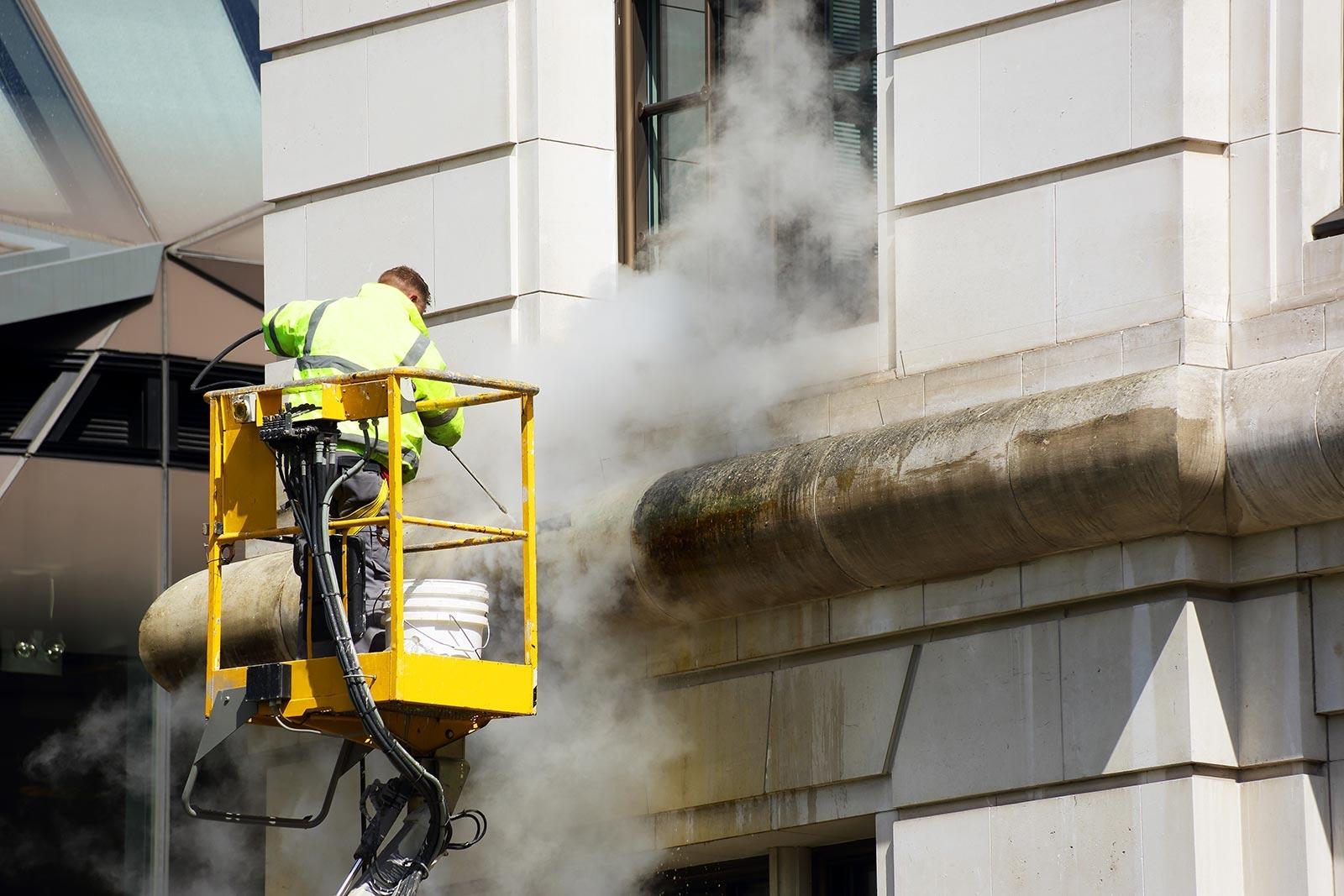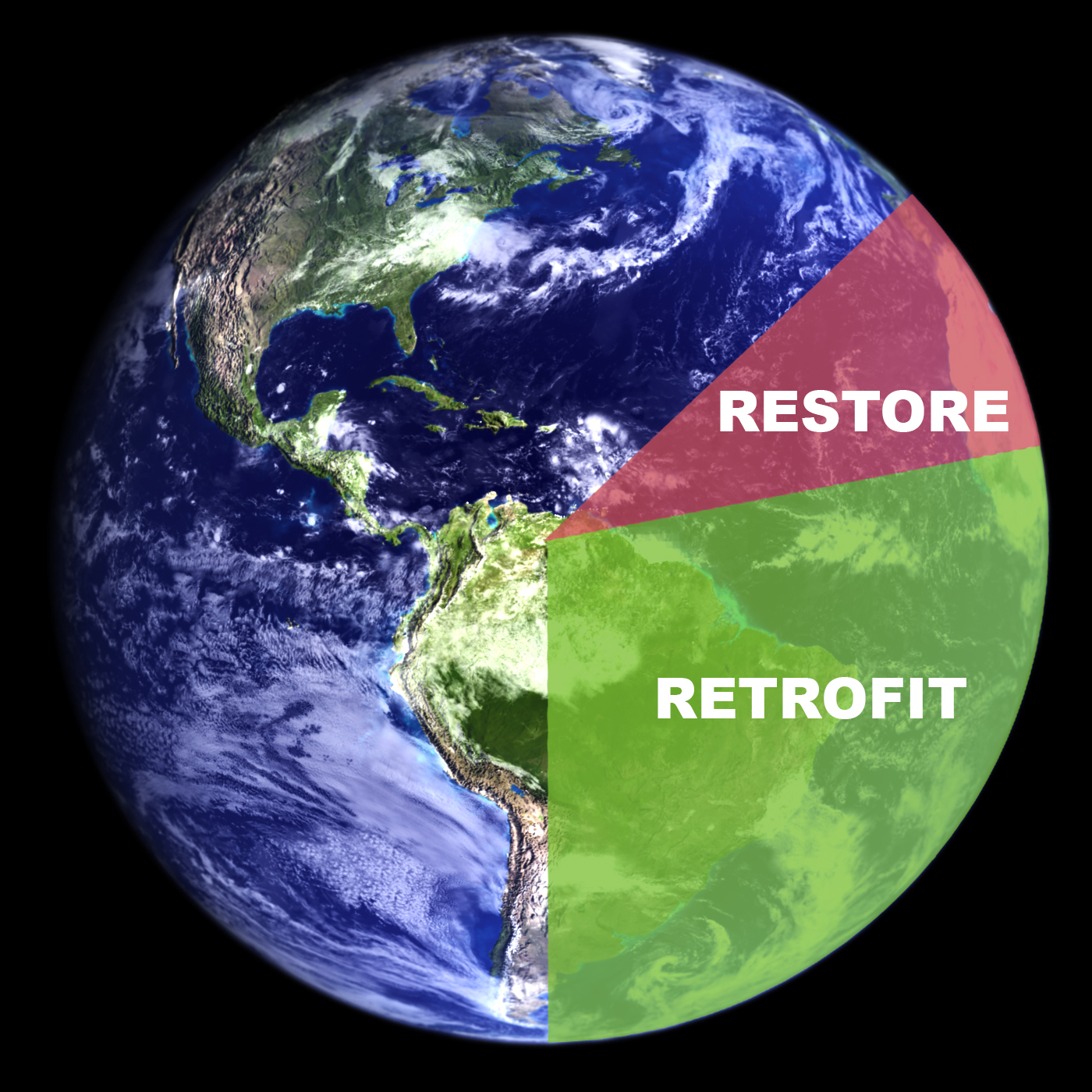After the gray snow piles melt and the temperature rises, building owners seek out the help of licensed professionals to give their building facades a Spring Cleaning. Aesthetic improvement is typically the chief motivation behind façade cleaning, but buildings also need to be cleaned to reduce the risk of damage to the exterior surfaces from environmental contaminants. The type of atmospheric and environmental contaminants that buildings are exposed to in an urban environment must be removed in order to prevent further deterioration, accurately diagnose surface conditions, and prepare the building surface for paint and coating applications.
Modern cities produce a great deal of acid rain that helps the contaminants in industrial and traffic fumes stick to the surfaces of buildings. Lead and other heavy metals blow around in the dust, and stick to rough surfaces like concrete and brick. Smoke, soot, biological growth and other forms soiling can stain a building and obscure elements in the façade that need inspection.
Evaluating and repairing the structural integrity of buildings is critical for their safety. Masonry and brick mortar can easily deteriorate in the presence of moss and lichen, acidic surface dirt and contamination, and other chemicals present on the surface. Inspecting and repairing the mortar and repointing is critical for the integrity of the building envelope. In many cases a thorough inspection isn’t possible until after cleaning.
The goal of a cleaning project is to clean the masonry while causing little or no damage to the façade surface. Several cleaning methods exist, however the correct method must be chosen to avoid overcleaning. Selection of a cleaning method depends on the nature of the façade materials, and the identified contaminants. The first step of any cleaning program is to characterize the soiling and identify its origins because soiling can often be a symptom of ongoing conditions which should be addressed before cleaning.
The methods for cleaning are broken down into three categories: water washing, chemical cleaning, and abrasive cleaning.
Water Washing
The simplest and safest method of cleaning is washing with water. Water often softens soiling deposits. Water can be sprayed or misted continuously or intermittently with alternating wash cycles. Water pressure and steam are also popular methods of façade cleaning, however they require more sophisticated equipment and should be employed cautiously.
Chemical Cleaning
When water is ineffective, a variety of chemical cleaners can be used. Detergents used in combination with water washing provide the gentlest cleaning. For heavier soiling, acidic cleaners can be used on materials such as sandstone and unpolished granite. For acid-sensitive materials such as limestone, marble and occasionally brick, Alkaline cleaners help to facilitate the removal of deposits, however a neutralizing acidic cleaner must be applied before a final water rinse removes all cleaning residues. When used inappropriately, chemical cleaners can result in irreversible damage to the façade. Precautions must also be taken to protect workers from potential health hazards.
Abrasive Cleaning
Absrasive cleaning removes soiling by mechanically scraping, grinding or blasting the surface with a dry or wet medium. Abrasive cleaning methods are harsher than water and chemical cleaning. Common techniques include Soda blasting, Pelletized carbon dioxide blasting, Façade Gommage, and the Jos cleaning process, to name a few. Most of these methods require specially trained professionals and sophisticated equipment. The use of abrasive cleaning methods should be limited to prevent damage to the façade surface as dirt is removed. These cleaning methods can rough stone surfaces, remove decorative detail from carvings, loosen mortar, and etch unprotected metal and glass.
Spring cleaning of building facades brings a beauty and sparkle back to city buildings after the gray of winter, allows for repair, and preserves historic facades. For more information on façade cleaning, please contact us.




